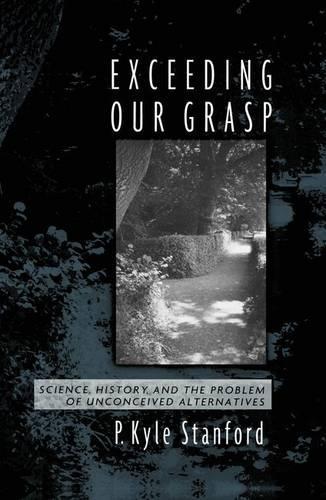Full Product Details
Author: P. Kyle Stanford (Assistant Professor of Logic and Philosophy of Science, Assistant Professor of Logic and Philosophy of Science, University of California, Irvine)
Publisher: Oxford University Press Inc
Imprint: Oxford University Press Inc
Dimensions:
Width: 15.50cm
, Height: 1.80cm
, Length: 23.40cm
Weight: 0.358kg
ISBN: 9780199751532
ISBN 10: 0199751536
Pages: 248
Publication Date: 29 April 2010
Audience:
College/higher education
,
Professional and scholarly
,
Undergraduate
,
Postgraduate, Research & Scholarly
Format: Paperback
Publisher's Status: Active
Availability: To order

Stock availability from the supplier is unknown. We will order it for you and ship this item to you once it is received by us.
Reviews
The argument is extremely clear, detailed, and thorough. It doesn't try to be a textbook, and is aimed squarely at professional philosophers and advanced students in philosophy of science. --Metaphilosophy Stanford has genuinely advanced the philosophical discussion about scientific realism with his careful articulation of the problem of unconceived alternatives. -- The Review of Metaphysics Stanford's book deserves to be widely read. Its central argument is clearly stated, its conclusion is radical, it engages in a productive fashion with detailed case studies, and it lays down several substantial challenges to scientific realism. Lastly, it is consistently thought-provoking. --Science
<br> The argument is extremely clear, detailed, and thorough. It doesn't try to be a textbook, and is aimed squarely at professional philosophers and advanced students in philosophy of science. --Metaphilosophy<p><br> Stanford has genuinely advanced the philosophical discussion about scientific realism with his careful articulation of the problem of unconceived alternatives. -- The Review of Metaphysics <br><p><br> Stanford's book deserves to be widely read. Its central argument is clearly stated, its conclusion is radical, it engages in a productive fashion with detailed case studies, and it lays down several substantial challenges to scientific realism. Lastly, it is consistently thought-provoking. --Science <br><p><br>
<br> The argument is extremely clear, detailed, and thorough. It doesn't try to be a textbook, and is aimed squarely at professional philosophers and advanced students in philosophy of science. --Metaphilosophy<br> Stanford has genuinely advanced the philosophical discussion about scientific realism with his careful articulation of the problem of unconceived alternatives. -- The Review of Metaphysics <br><br> Stanford's book deserves to be widely read. Its central argument is clearly stated, its conclusion is radical, it engages in a productive fashion with detailed case studies, and it lays down several substantial challenges to scientific realism. Lastly, it is consistently thought-provoking. --Science <br><br>
The argument is extremely clear, detailed, and thorough. It doesn't try to be a textbook, and is aimed squarely at professional philosophers and advanced students in philosophy of science. * Metaphilosophy *
Author Information
Department of Logic and Philosophy of Science at the University of California, Irvine




